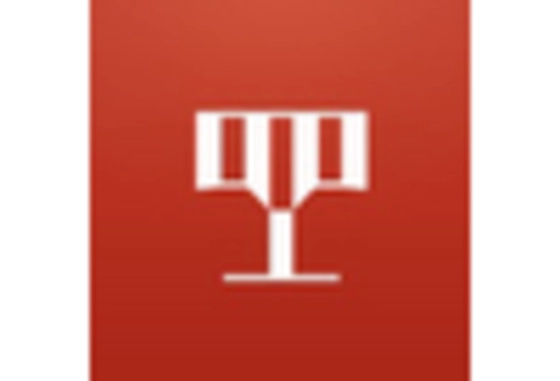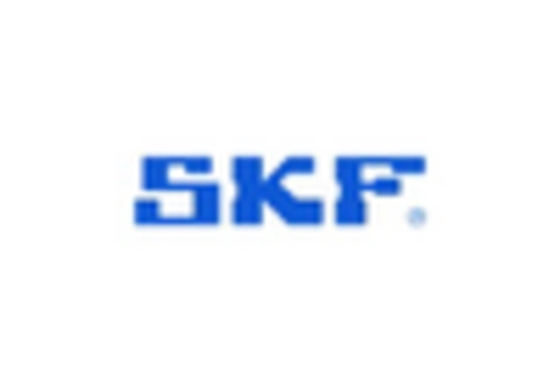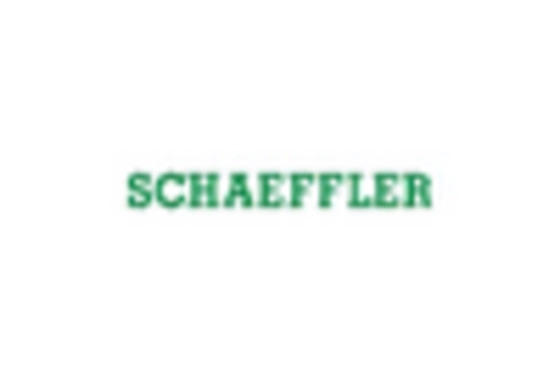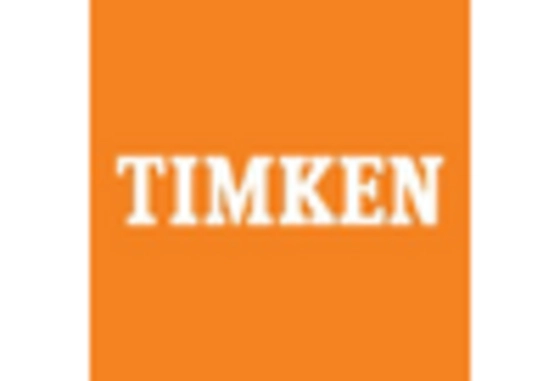Increasing Vehicle Ownership
The rise in vehicle ownership is a pivotal driver for the Automotive Wheel Bearing Aftermarket Market. As more individuals acquire vehicles, the demand for replacement parts, including wheel bearings, escalates. In recent years, the number of registered vehicles has surged, leading to a corresponding increase in the need for maintenance and repair services. This trend is particularly pronounced in emerging markets, where vehicle ownership rates are climbing rapidly. Consequently, the Automotive Wheel Bearing Aftermarket Market is poised to benefit from this growing consumer base, as vehicle owners seek reliable and durable components to ensure optimal performance and safety. The increasing complexity of modern vehicles also necessitates regular maintenance, further propelling the demand for high-quality wheel bearings.
Rising Awareness of Vehicle Maintenance
There is a notable increase in consumer awareness regarding the importance of regular vehicle maintenance, which significantly influences the Automotive Wheel Bearing Aftermarket Market. As vehicle owners become more informed about the implications of neglecting maintenance, they are more likely to invest in quality replacement parts, including wheel bearings. This trend is supported by various educational campaigns and resources that emphasize the role of proper maintenance in extending vehicle lifespan and enhancing safety. Furthermore, statistics indicate that a well-maintained vehicle can lead to lower long-term costs, thereby encouraging consumers to prioritize quality components. This heightened awareness is likely to sustain the growth of the Automotive Wheel Bearing Aftermarket Market as consumers actively seek out reliable and efficient solutions for their vehicles.
Growth of E-commerce in Automotive Parts
The expansion of e-commerce platforms is reshaping the Automotive Wheel Bearing Aftermarket Market. With the increasing prevalence of online shopping, consumers are now able to access a wider range of automotive parts, including wheel bearings, from the comfort of their homes. This shift towards digital purchasing is particularly appealing to tech-savvy consumers who prefer the convenience and often competitive pricing offered by online retailers. Data suggests that e-commerce sales in the automotive sector have been on the rise, indicating a shift in consumer behavior. As more individuals turn to online platforms for their automotive needs, the Automotive Wheel Bearing Aftermarket Market is likely to experience significant growth, driven by the accessibility and variety of products available online.
Regulatory Standards and Safety Compliance
The implementation of stringent regulatory standards and safety compliance measures is a crucial driver for the Automotive Wheel Bearing Aftermarket Market. Governments and regulatory bodies are increasingly focusing on vehicle safety, which necessitates the use of high-quality components, including wheel bearings. Compliance with these regulations not only ensures the safety of vehicles on the road but also influences consumer purchasing decisions. As vehicle manufacturers strive to meet these standards, the demand for reliable aftermarket parts is expected to rise. This trend is particularly relevant in regions where safety regulations are becoming more rigorous. Consequently, the Automotive Wheel Bearing Aftermarket Market is likely to benefit from the heightened emphasis on safety and compliance, as consumers seek to ensure their vehicles meet the necessary standards.
Technological Innovations in Wheel Bearings
Technological advancements in wheel bearing design and manufacturing are driving the Automotive Wheel Bearing Aftermarket Market forward. Innovations such as the development of advanced materials and improved manufacturing processes have led to the production of more durable and efficient wheel bearings. These advancements not only enhance the performance of vehicles but also reduce the frequency of replacements, thereby influencing consumer purchasing decisions. The introduction of features such as noise reduction and increased load capacity has made modern wheel bearings more appealing to consumers. As manufacturers continue to invest in research and development, the Automotive Wheel Bearing Aftermarket Market is expected to witness a surge in demand for these technologically advanced components, as consumers seek to enhance their vehicle's performance and reliability.


















Leave a Comment